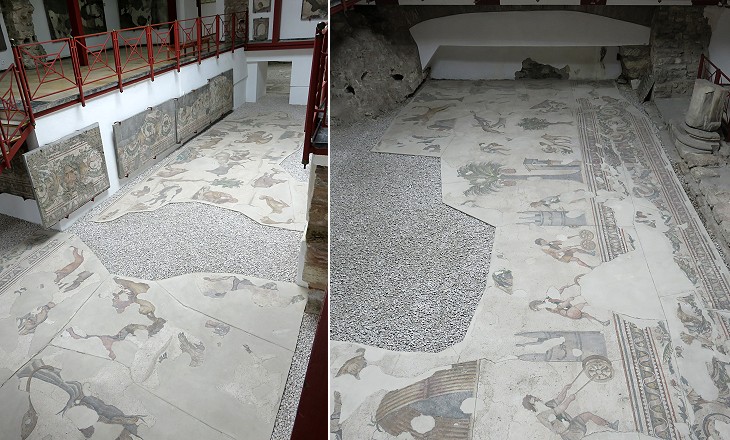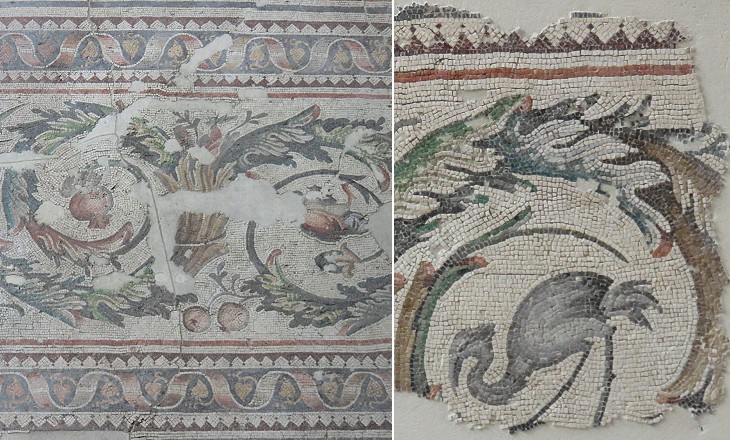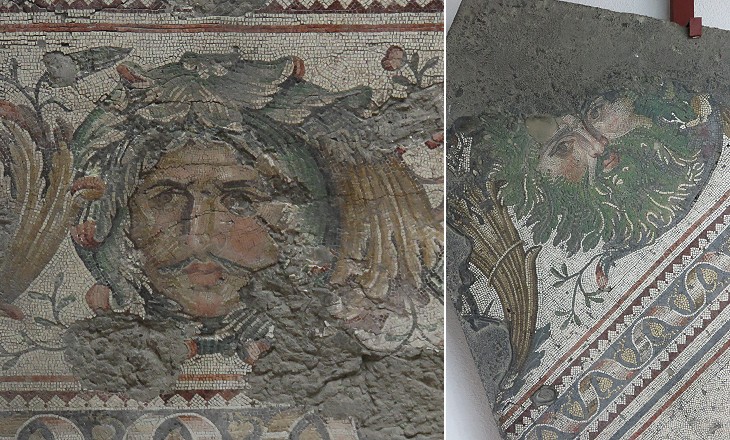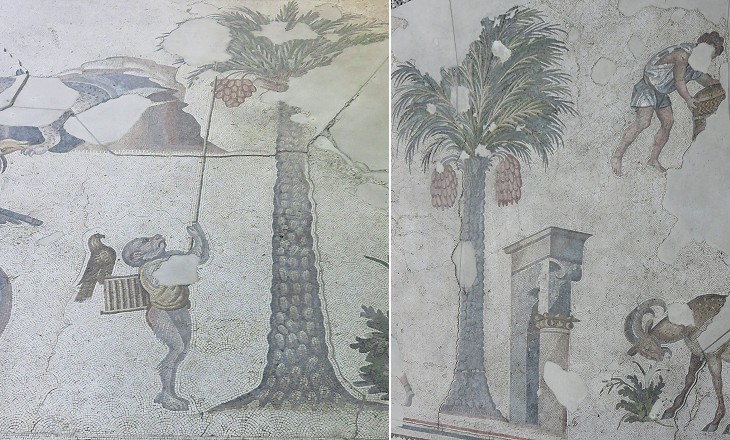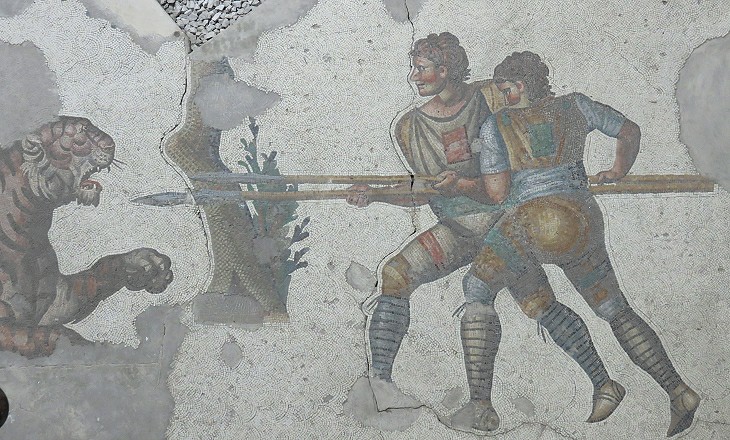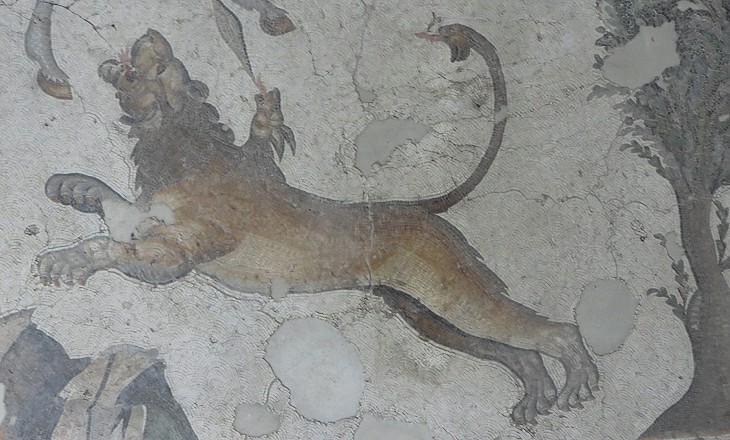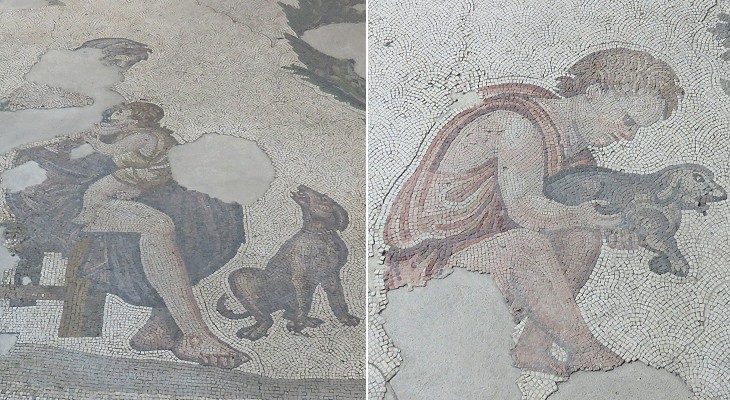  What's New! Detailed Sitemap All images © by Roberto Piperno, owner of the domain. Write to romapip@quipo.it. Text edited by Rosamie Moore. Page added in August 2015. |
 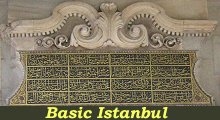 - The Great Palace Mosaic Museum - The Great Palace Mosaic Museum
You may wish to see an introductory page to this section first.
In the 1930s and 1950s Scottish archaeologists found some ruins of the palace Emperor Justinian built/renovated on the eastern side of the Hippodrome. They were buried under Sultan Ahmet Kulliyesi which was built in the early XVIIth century on the area where the palace once stood. New archaeological excavations carried out by Austrian archaeologist Werner Jobs in the 1990s led to the discovery of floor mosaics decorating a wing of a large courtyard. Eventually some concrete structures were built to allow the public to visit The Great Palace Mosaic Museum.
The floor mosaics were made after riots broke out at the Hippodrome in 532. They caused a major fire which destroyed Hagia Sophia and most of the imperial palace. The decorative band surrounding the central part of the mosaic does not depart from traditional patterns and it is relatively plain when compared with those of previous centuries (see a mosaic at the Museum of Tripoli in Libya - it opens in another window).
Heads of men which occasionally interrupt the acanthus scrollwork can be seen in other earlier mosaics. They often represented the Four Seasons or sea creatures (see a mosaic from Antioch at the Louvre Museum in Paris or a mosaic at the Museum of Gaziantep - they open in another window).
While the band does not depart from tradition the area it surrounds has some elements of novelty: it is occupied by a series of unrelated subjects/scenes on a plain white background. They are arranged in three strips with occasionally some subjects (e.g. palm trees) occupying two strips. Ancient mosaicists in general had horror vacui (fear of empty space) and they used many ways to frame the central scenes (e.g. Mosaic of Zeus and Ganymedes at the Museum of Thysdrus in Tunisia and a mosaic on a white background at Aquileia - they open in another window). Date palm trees were a Christian symbol for Resurrection/Eternal Life and they can be seen next to saints in mosaics of the Vth century (e.g. at the Arian Baptistery of Ravenna), but the palm trees shown above are void of any hidden meaning.
Hunting scenes (see a mosaic at the Museum of Bardo in Tunisia - it opens in another window) and scenes of gladiatorial fights with beasts (see a mosaic at the Museum of Tripoli in Libya - it opens in another window) were common subjects for mosaics. That shown above most likely depicts a gladiatorial fight. The two men seem to wear a uniform with protections for their legs and a coloured square cloth. Chariot racers at the Hippodrome used to wear a coloured uniform and their supporters did the same. The riots in 532 were caused by the rivalry between Blues and Greens.
Emperor Justinian (St. Justinian for the Eastern Orthodox Christians) was the Head of the Church. He endorsed the appointments of bishops by local constituencies including those of the Patriarchs of Rome and Constantinople. He placed his monogram on the decoration of churches. At S. Vitale in Ravenna in a mosaic next to the altar he was portrayed more as a church leader than as a military commander. The decoration of the courtyard does not have any references to Justinian's religious role; instead some mythological creatures are depicted in isolation, without showing the hero/god to whom they are usually associated.
Overall the prevailing subjects are those having a domestic, peaceful content. That makes it likely that the courtyard was part of the private apartments of the emperor, notwithstanding its large size. Had Justinian planned to receive the highest dignitaries of the Empire in this courtyard, he would have asked the mosaicists to depict his achievements, i.e. the successful wars in Africa and Italy, the reconstruction of Hagia Sophia, the crushing of heresies, etc.
The image used as background for this page shows a detail of the mosaic depicting an elephant. Introduction to this section Roman Memories Hagia Sophia Hagia Irene and Little Hagia Sophia Byzantine Heritage - Other Churches (before 1204) Roman/Byzantine exhibits at the Archaeological Museum St. Saviour in Chora Byzantine Heritage (after 1204) First Ottoman Buildings The Golden Century: I - from Sultan Selim to Sinan's Early Works The Golden Century: II - The Age of Suleyman The Golden Century: III - Suleymaniye Kulliye The Golden Century: IV - Sinan's Last Works The Heirs of Sinan Towards the Tulip Era Baroque Istanbul The End of the Ottoman Empire Topkapi Sarayi Museums near Topkapi Sarayi The Princes' Islands Map of Istanbul Other pages dealing with Constantinople/Istanbul: The Walls of Nova Roma Galata Clickable Map of Turkey showing all the locations covered in this website (opens in another window). |
